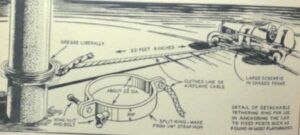
[November 30, 2020] – News came out just before American Thanksgiving that Dassault had purchased full equity in database maker NuoDB. Over the years, the large Europe-based advanced design and development concern had already invested significantly in the Cambridge, Mass. start-up’s technology.
While details of the purchase were sparse, Dassault did not hesitate to reveal that 2019 revenue for NuoDB was about $6 million. While it is clear that NuoDB found uses, and that it has become intrinsic to Dassault companies’ vigorous efforts to host data on the cloud, the 2019 revenue indicates the 12-year-old NuoDB never did outgrow its status as a “start-up.”
NuoDB was in the first wave of NewSQL databases. Its tale is an admonitory one for tech buyers, as the first wave may not be the one you actually want to ride (the second wave too, for that matter), at least if you have another choice.
The NuoDB database was designed for distributed deployment on the cloud, but maintained a type of ACID compliance, and was programmable by developers versed in SQL. Its original architecture called for division of data elements into software objects that the company called “atoms”. In terms of marketing, it likened its “atoms” to origami, the folds of which can be reconfigured in endless combinations. In the computing sphere, “endless combinations of configurations” today are called “elasticity.”
NuoDb founders included Barry Morris, who had served as CEO at ORB-maker Iona Technology and stream-database-maker Streambase before NuoDB, and Jim Starkey, a key database builder at DEC, and the man that invented the BLOB – which he once assured me did not stand for binary large object, but instead stood for, well, BLOB. Both Morris and Starkey left NuoDB some time ago. [For his part, Morris is now with AWS.]
Together with VoltDB and MemSQL (now Singlestore) NuoDB had a hand in forging the NewSQL market, which took some lessons from upstart NoSQL databases, but kept SQL in the mix.
While NewSQL – and NuoDB – had a distinct value proposition at the outset, embracing established SQL methods at a time when Hadoop and NoSQL upstarts were jettisoning the vaunted query language, that edge has greatly diminished as a second rush of database startups – many with a nod and wink to Google’s Spanner database – plyed the waves, and as NoSQL vendors got “some kind of SQL” fever.
Like the object-relational database advanced scouts of the 1990s, both NewSQL and NoSQL vendors found slaying the established RDBMS dragon a hard task. Still, cloud architecture has changed the architecture and economics of computing to a striking degree, and the new databases still find homes, if they find users.
NuoDB’s absorption by Dassault can be likened to earlier absorptions (by their own customers) of bleeding edge database players that did not quite get to that next funding round. The innovations find use in big concerns that have learned the limits of applying relational solutions to every possible problem, and for whom scaling data processing onto the cloud is job number one. – Jack Vaughan
